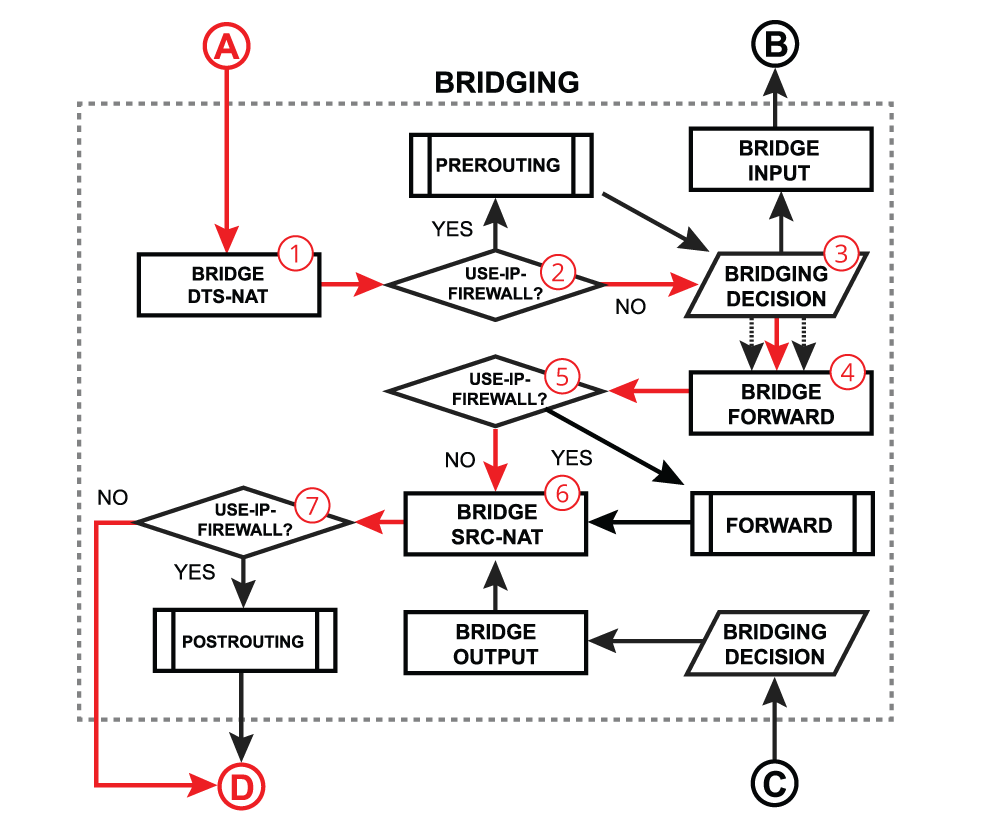...
- routing decision - go through routes in the routing table to find a match for the destination IP address of the packet. When a match is found - the packet will be processed further, in case of no match - the packet will be discarded.;
- mpls decision - what to do with the packet based on MPLS forwarding tables;
- bridging decision - bridge goes through the MAC address table to find a match for the destination MAC address of the packet. When a match is found - the packet will be processed further, in case of no match - multiple copies of the packet will be created and packets will be flooded (sent out via all bridge ports). A single packet copy will also reach a bridge input chain as the bridge interface itself is one of the many destinations. When using
vlan-filtering=yes, packets that are not allowed due to the "/interface bridge vlan" table, will be dropped at this stage. - use-ip-firewall - whether a 'use-ip-firewall' option is enabled in bridge settings;
- ipsec-policy - whether a packet matches any of configured IPsec policies;
...
| Section | ||||||||||
|---|---|---|---|---|---|---|---|---|---|---|
|
...
